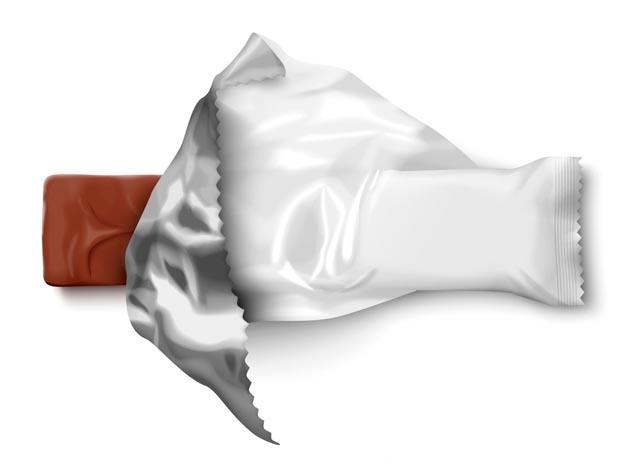Cold Seal Packaging Market Sees Growth Amid Rising Demand for Sustainable Packaging Solutions

The cold seal packaging market is experiencing a notable rise, driven by increasing demand for efficient and sustainable packaging solutions in various industries. Particularly prominent in the food, pharmaceutical, and personal care sectors, cold seal packaging offers distinct advantages such as fast application, reduced energy consumption, and product safety. As global consumer trends evolve and sustainability becomes a central focus, cold seal packaging is projected to expand significantly over the next decade.
What is Cold Seal Packaging?
Cold seal packaging is a process that uses pressure-sensitive adhesives to bond materials without the need for heat. Unlike traditional heat-sealing methods, cold sealing is ideal for packaging heat-sensitive products. This method enhances production speed, minimizes energy use, and reduces the risk of damaging delicate goods. It is widely used in packaging chocolate bars, protein bars, bandages, and medical devices.
Market Size and Growth Projections
According to recent industry analyses, the global cold seal packaging market was valued at approximately USD 19.4 billion in 2023. It is projected to grow at a compound annual growth rate (CAGR) of around 5.2% from 2024 to 2030. By the end of the forecast period, the market is expected to surpass USD 27 billion.
This growth is primarily fueled by the booming food and beverage industry, the rise of ready-to-eat and convenience foods, and the expansion of e-commerce platforms requiring secure, tamper-evident packaging. Additionally, sustainability trends are encouraging companies to adopt cold seal solutions, as they typically require fewer resources and produce lower carbon emissions compared to heat seal packaging.
Key Market Drivers
1. Food Industry Demand
Cold seal packaging is especially well-suited for confectionery and bakery items, where maintaining product integrity is crucial. Chocolate, for instance, is highly temperature-sensitive; using cold seal technology ensures it remains undamaged during packaging. The growing demand for snack bars, granola bars, and other processed foods supports the continued adoption of cold seal packaging.
2. Growth in Healthcare and Pharmaceuticals
Pharmaceutical packaging requires precision and safety. Cold seal materials can securely contain medical items such as bandages, test kits, and sensitive diagnostic tools. As global healthcare spending increases and the demand for sterile packaging rises, the cold seal segment is poised to expand in this sector.
3. Environmental and Cost Benefits
Energy efficiency is one of the standout advantages of cold seal packaging. By eliminating the heat application step, manufacturers can reduce electricity consumption and operational costs. Moreover, cold seal films often use water-based adhesives, aligning with the broader shift toward eco-friendly manufacturing practices.
Regional Insights
North America
North America holds a significant share of the market, led by the United States. Strong consumer demand for convenience foods, combined with well-established food and pharmaceutical industries, makes the region a major hub for cold seal technology. Additionally, increasing emphasis on sustainable packaging among U.S. corporations is driving innovation in the sector.
Europe
Europe also exhibits steady growth, with countries like Germany, France, and the UK prioritizing sustainable packaging regulations. The region's robust pharmaceutical industry and eco-conscious consumers are encouraging adoption across multiple verticals.
Asia-Pacific
The Asia-Pacific region is projected to register the fastest growth during the forecast period. Rapid urbanization, a growing middle class, and rising disposable incomes are fueling demand for packaged foods and healthcare products. Countries like China, India, and Japan are witnessing increased investment in cold seal packaging infrastructure.
Challenges and Restraints
Despite its benefits, cold seal packaging faces certain limitations. Not all products are compatible with cold seal adhesives, and some cold seal materials may not offer the same barrier properties as heat-sealed alternatives. Additionally, the initial setup costs for converting packaging lines to cold seal systems can be significant, which may deter small- and medium-sized enterprises from making the switch.
Furthermore, cold seal adhesives have specific storage and handling requirements to maintain their effectiveness, which adds complexity to the supply chain. However, ongoing R&D efforts are aimed at improving the versatility and performance of cold seal materials.
Competitive Landscape
The market features a mix of established global players and regional companies. Key industry participants include Amcor Plc, Sealed Air Corporation, Mondi Group, Constantia Flexibles, and Berry Global Inc. These firms are investing in research and development to enhance the performance of cold seal adhesives and create customized solutions for end-users.
Mergers, acquisitions, and strategic partnerships are common in the market, enabling companies to broaden their geographic presence and product offerings. Many are also focusing on developing recyclable or biodegradable cold seal films to appeal to environmentally conscious consumers.
Future Outlook
The future of cold seal packaging looks promising, with technological innovation and sustainability trends working in tandem to shape its evolution. As brands seek faster, cleaner, and greener ways to package goods, cold seal technologies will become increasingly mainstream. Emerging economies, in particular, offer new opportunities for expansion, as they modernize infrastructure and packaging capabilities.
With continuous improvements in adhesive formulations, film compatibility, and automation, cold seal packaging is set to become a preferred choice for manufacturers looking to balance efficiency with environmental responsibility.
- Art
- Causes
- Crafts
- Dance
- Drinks
- Film
- Fitness
- Food
- Games
- Gardening
- Health
- Home
- Literature
- Music
- Networking
- Other
- Party
- Religion
- Shopping
- Sports
- Theater
- Wellness


